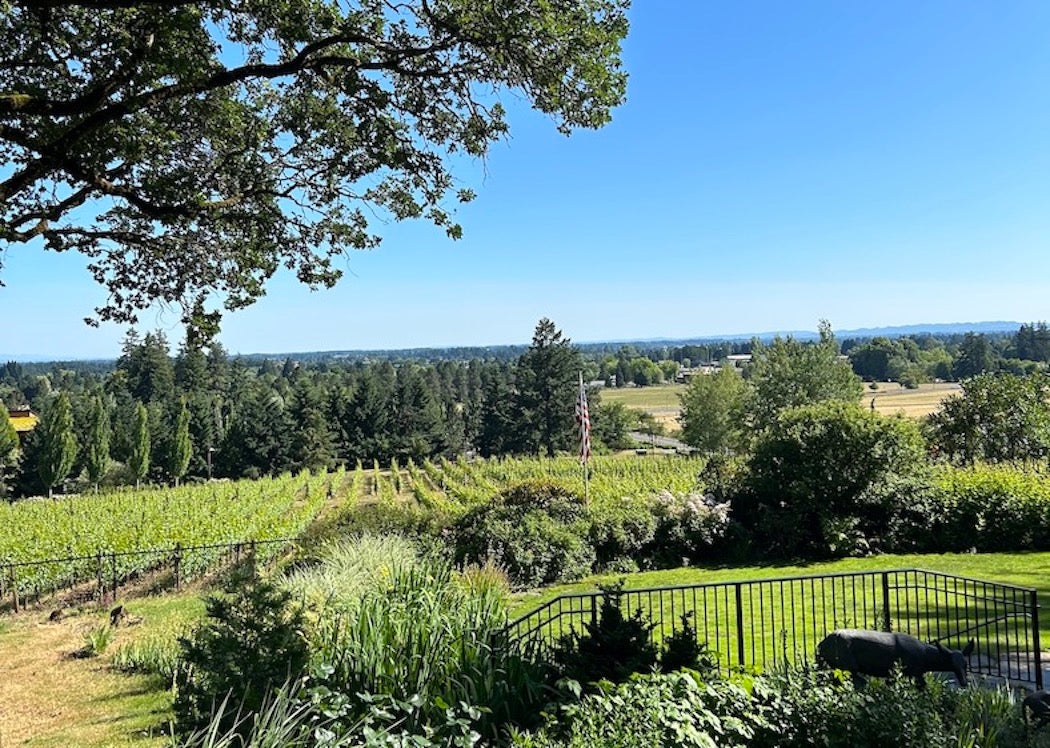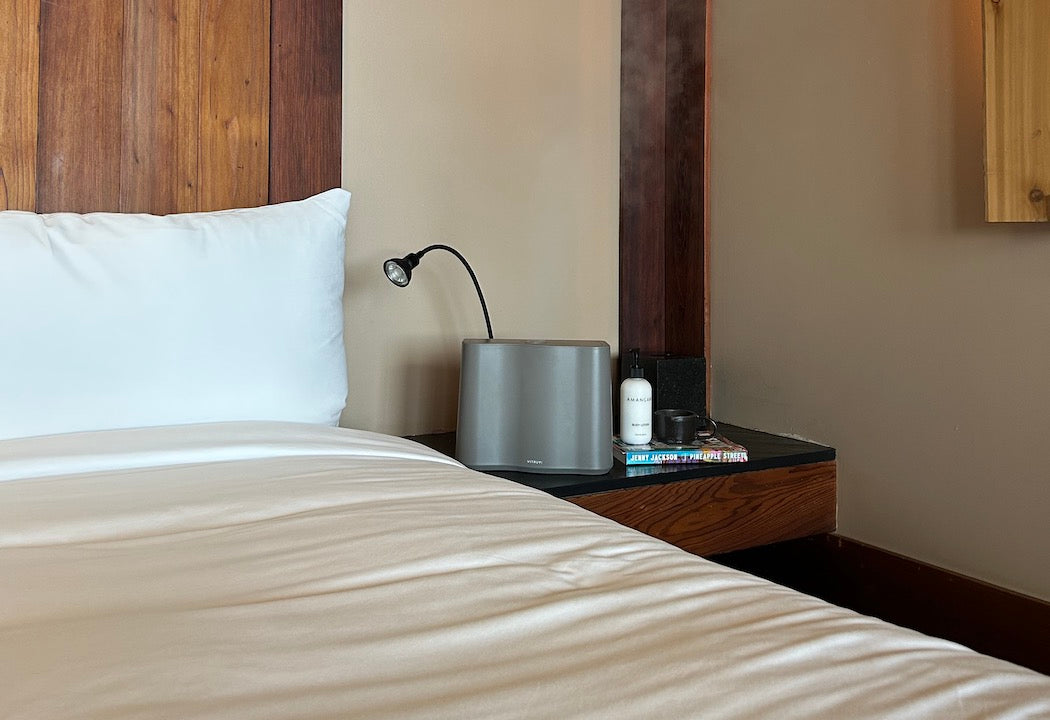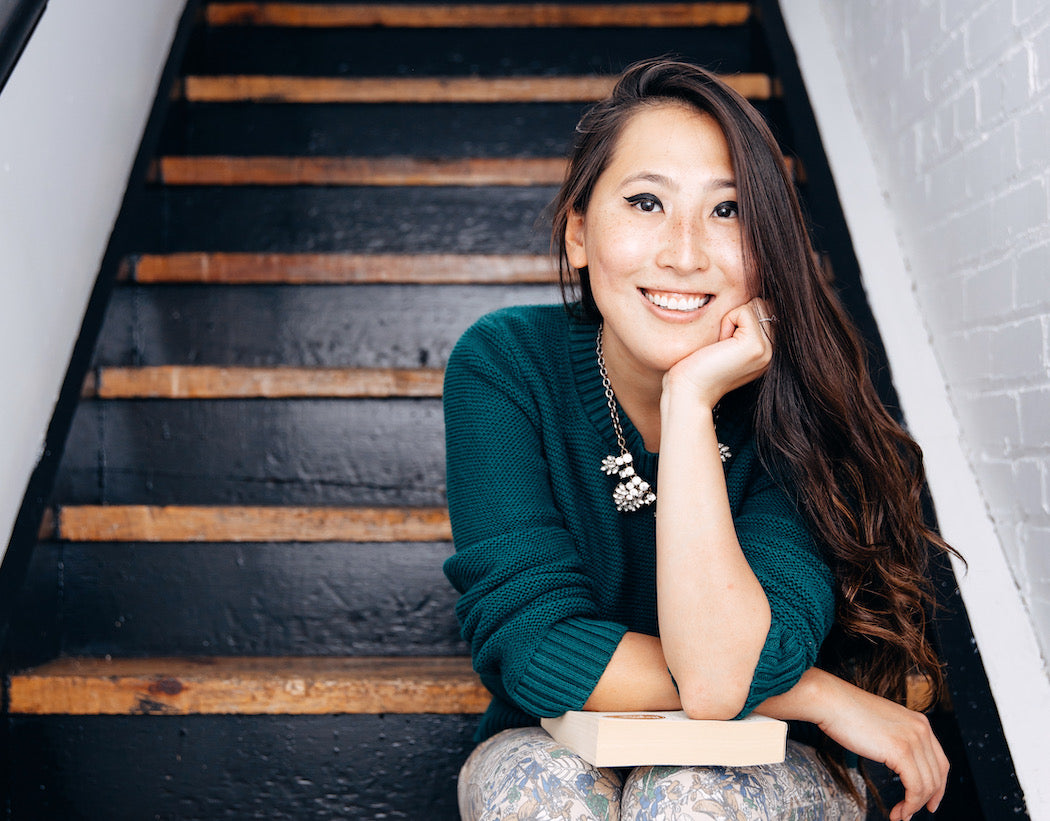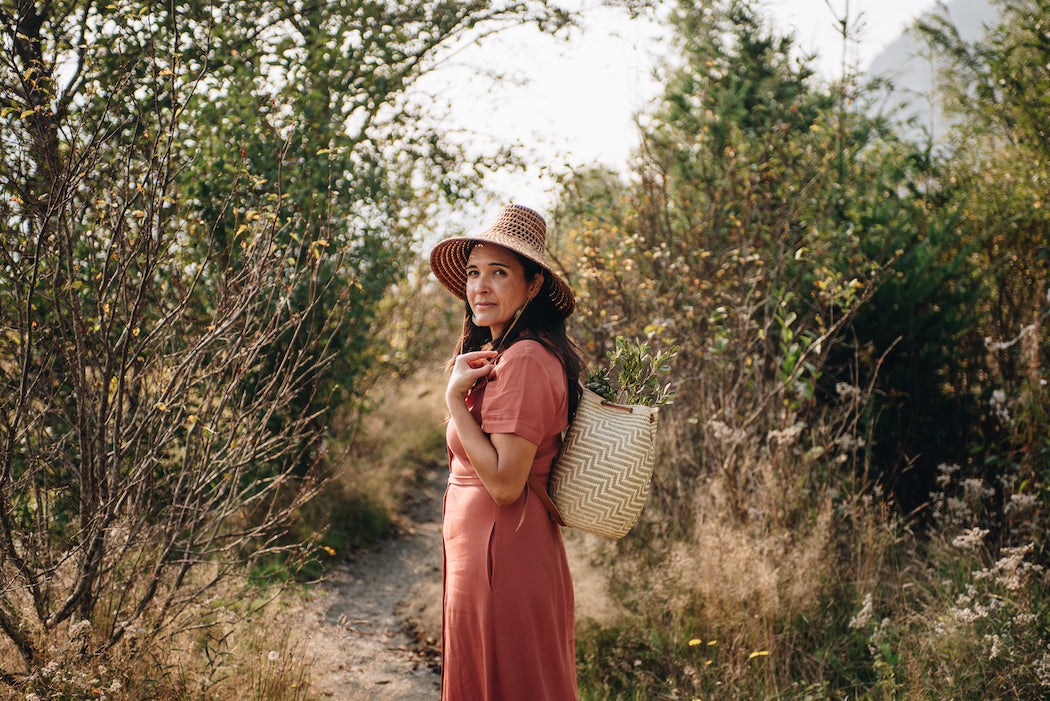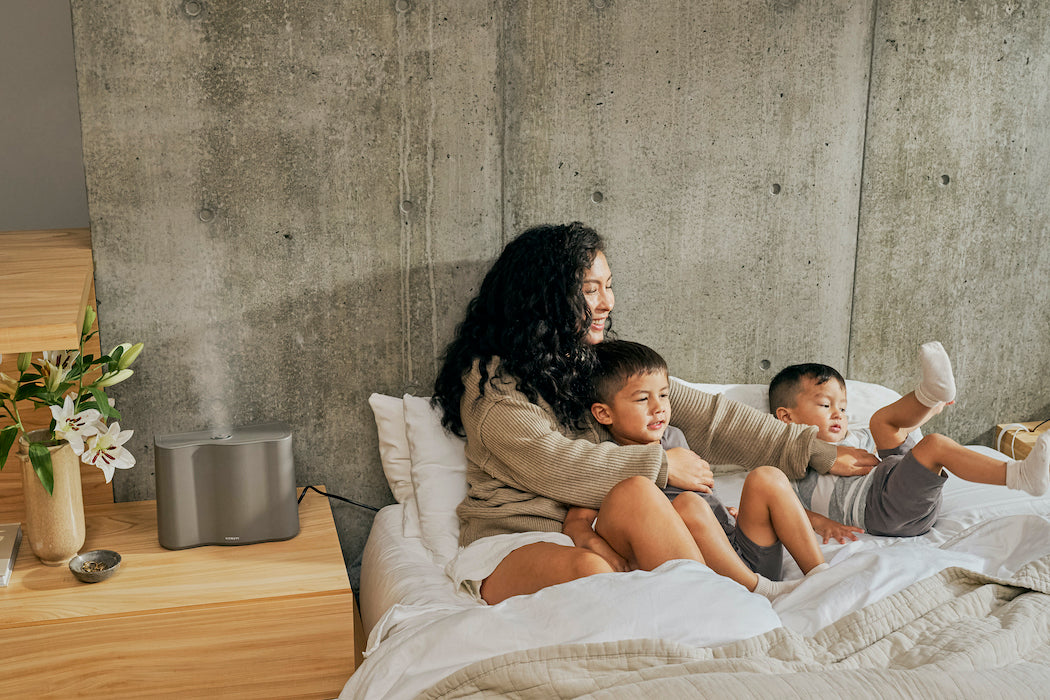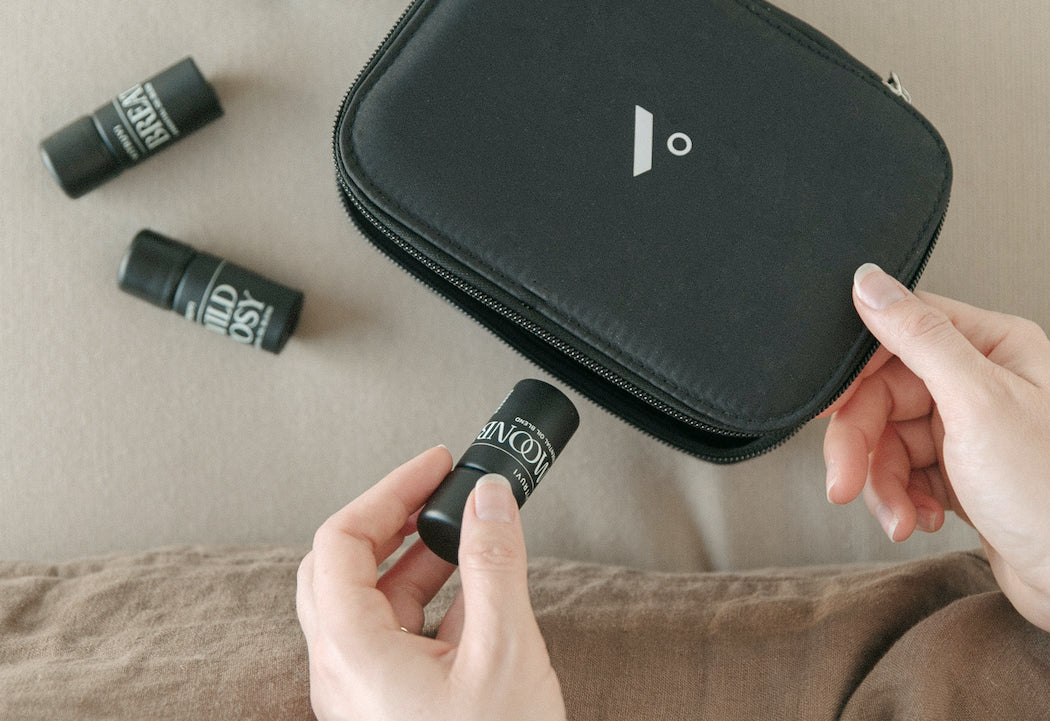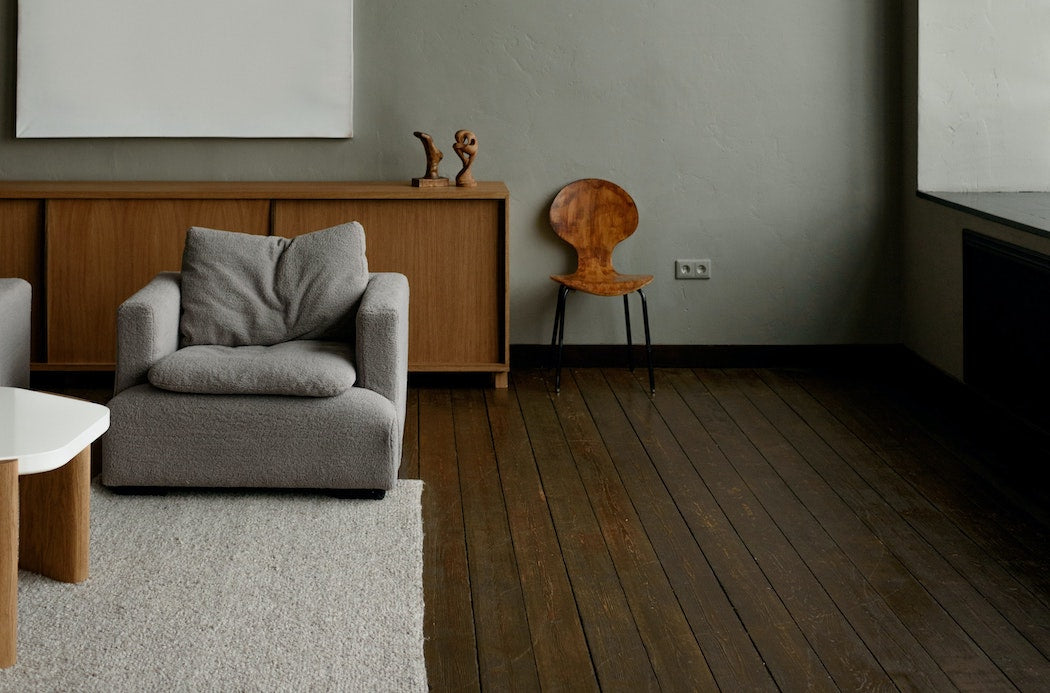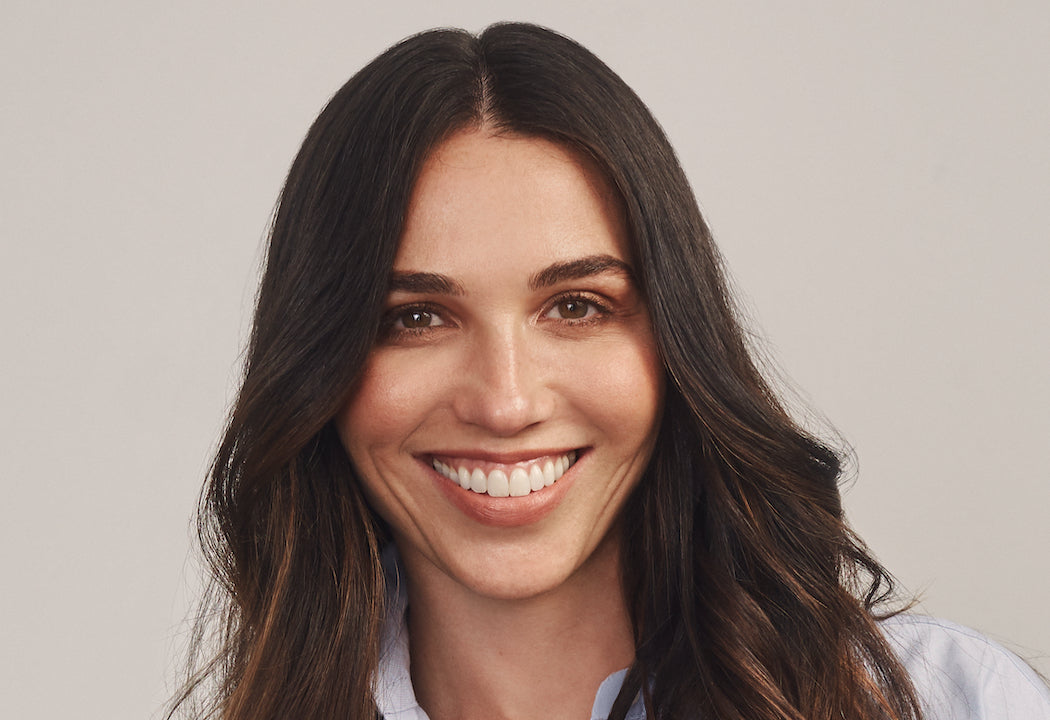Madison Utendahl is doing things differently.
And not just for the sake of it, but because she genuinely believes the status quo needs to change. The founder of design agency Utendahl Creative (whose resume also includes working with Last Week Tonight with John Oliver, Museum of Ice Cream, and Refinery29’s 29Rooms, as well as being a Forbes 30 Under 30 inductee) is doing everything she can to lead her company with compassion, empathy, and employee wellbeing at the forefront.
“As a society, we’re burning out,” she says via video from her home in Los Angeles. “And I don’t believe that our work culture has adequately pivoted to be able to support and be true allies to human beings during this time—especially in the creative world, which also notoriously underpays. You’re asking people to survive in a way that is so extreme, and I, as a founder, have decided that is not how we’re going to operate as a business.” From five weeks of mandatory paid time off, to a regular four-and-a-half-day work week, to no meetings before noon on Mondays, she’s ensuring that her team is truly taken care of. Because work is “work,” yes—but it doesn’t have to be a grind.
Speaking of the grind, she has thoughts on that, too. And on good design (hint: it’s going against the norm). And on discomfort. It’s all below.
What led you to start Utendahl Creative? What blank space in the industry were you looking to fill with it?
I spent a lot of time on the brand side of building businesses. And I noticed time and time again that when we would meet with design agencies in particular, they were always all male, with one or two women, or they were all white. I sat in a couple of meetings when I left working for the Museum of Ice Cream; I was consulting where the targeted audience of the brand that they were going after were women or people of color, and then on the agency side, the people that we were meeting were all white or all male. I started to say to myself, “How are we not having diverse creative minds, and thoughtful creative minds, in these spaces?” I saw there was a massive gap, and was like, “What does it mean as a Black woman for me to build a creative agency that’s female-led, and female-employed, to support and build and create brands that are catering to and targeting women and people of color?” So I took the crazy leap and started my own firm.
How has it been taking that leap and building up your client roster on your own?
Every day is the biggest day of the biggest job I’ve ever had—that is the way that I look at it. There are some days when it’s extremely overwhelming, and there are some days when I am fully confident and certain that this is exactly where I’m supposed to be and it feels so right. I think that is the ebb and flow, the wave, of what it means to be an entrepreneur. It feels incredibly rewarding. And my “why” is very clear; I know why I got into this, and therefore why I’m still in it makes a lot of sense to me. What I am giving myself grace to accept and understand now is that businesses change all the time and roles change. So how do we as a company, and I as an individual, constantly maintain a sense of calm and ease and balance? Because it’s just the nature of what it means to do this work, and I’m finding that actually being less focused on trying to map out what the rest of my life is going to look like and being more present in my day-to-day is a lot more fun.
On those days when you have those doubts, how do you get back to the place where you feel like you’re doing exactly what you’re meant to be doing?
I have to sometimes pause and put my phone on airplane mode: totally disconnect myself from the world temporarily, and meditate or write or run. And allow myself to move through the overwhelm, versus trying to distract myself from it. Personally, it has been incredibly beneficial to sit in the discomfort and let the discomfort pass, versus what I think—specifically in American society and American work culture—we’re taught to do, which is distract and keep going. Ultimately if you just keep suppressing the overwhelm, it manifests itself and comes out in ways that are not productive to you and usually not productive to the people around you, like picking a fight with your partner or missing a deadline. When we don’t deal with our feelings and don’t pause, they don’t go away; they just sort of sneak in.
Steering away from using the term “work-life balance,” what does work-life integration look like for you?
I’m so glad you said that. I too have stopped using the language “work-life balance.” One, because I think it just puts a lot of pressure, in particular, on women and the expectations we have—I mean, I’m not married, I don’t have any kids. But I have friends who are married and friends who have kids, and I see even the most feminist of friends who have feminist, supportive, ambitious partners who believe in them—and they still struggle with this societal expectation and pressure of finding this work-life balance.
So the way that I think about the work-life intersection and how I integrate both is by trying to have grace with myself that some days I will overwork and some days I will rest and not do any work, and some days I’ll do both of them. But on the days I overwork or the days I don’t work enough, having grace and just being like, “That’s okay,” you know what I mean? Not putting any pressure on myself or going through that cycle of shame around, “Why am I working myself to death?” Or, “How could I be so lazy?” It’s about changing that language—eliminating that language—and constantly trying to speak to myself with compassion and kindness. Because is there such a thing as working too much or working too little if you can accept where you are in that exact moment?
What do you think makes a good leader?
I think it’s empathy and also boundaries—both in yourself as a leader and in the expectations you have for other people.
Empathy is the most important part about being a successful leader because we have to have it at all times. I find as a business owner, and as a leader, you have to remember that every single day, the people you work with are choosing to work with you. Technically, at any point, anyone can quit their job and go work somewhere else. So there’s a naivete, or I would like to even say an ignorance, that a lot of founders and bosses have, of: “This person should be grateful to work here.” But we forget that the person is making a choice—and that’s awesome. And we need to have empathy and respect and gratitude that the person is choosing to go to their job every single day. So for me, that’s a really important quality.
And then the boundaries part is for myself as a leader and a boss and a founder. Just because I started something doesn’t mean I have to be a slave to it; I also can have boundaries. I also can say, “I’m taking this day off, I’m turning off my Slack, getting off email,” and that does not make me more or less of a good boss or leader. If you set an example for boundaries for yourself, it empowers your team. When as a boss you take a vacation and are still Slacking your team or emailing them, you’re teaching them that you don’t have boundaries—and that when they’re on vacation, they should be doing the same. Let’s eliminate this glory badge of working on your vacation. What’s with that? I’m not impressed by that. That’s not cool to me.
You’re so right. You’re going to do better work if you’ve had time and space away from work.
Absolutely. I love Brene Brown, and one of her things right now is about changing our understanding of grit and grind. Something I’ve heard over and over again, unfortunately, is “grind until you die.” And what is that all about? What is the point? If you’re fortunate, life is very long—and who wants to live a long life where you were a slave to your job and were absolutely miserable? I certainly don’t. Have grit in the moments you need to, but you don’t need to grind until you die. It’s harmful and unproductive and it actually perpetuates a really negative work cycle.
How do you decide who to work with? What matters to you in a potential client?
I want to start off by saying that it’s a real privilege when you’ve reached the point as a business where you get to make those decisions. We spent the first part of our business not having that choice. We just said yes to build our roster, to have that client, to have the money coming in. So I am fully aware now what it means to have the opportunity to vet—that’s a really amazing moment as a founder.
When I think of vetting, it actually all comes down to values. Do we share the same values? I’ve had potential clients that we’ve said no to who weren’t willing, despite having the capital behind them, to invest more in creative because it wasn’t worth it to them. Well, we’re not in the business of cheap design labor. You don’t come to us because you want a quick, easy logo that has no thought and intention. We’re not the agency for that. We’re an agency that explicitly designs with empathy and emotion and intention behind what we do. So that’s one thing: do we share similar values? Are they in the mindset of quick and cheap, or thoughtfully done and maybe a little bit more expensive because it’s worth it? You’re investing in a group of women who take that time and consideration to ensure your brand is set for success in the end.
I would say another thing is: are you listening or are you hearing me? That’s something that we assess early on: is this client interested—genuinely interested—in what I have to say? Or do they have an idea of what they want and they just start asking us to execute? Listening and hearing are such drastically different things. A lot of clients hear you, but they’re not listening. And that’s not a partnership. That’s not collaboration. If my boyfriend did not listen and only heard me, I don’t know what kind of relationship that would be, and vice versa. It doesn’t sound great. It sounds like a lot of needs will not get met on both ends.
In your eyes, what is good design?
I think good design is risky. I think good design is rooted in human emotion. I think good design is anti-trend and unorthodox. I think good design is collaborative, and not individualistic; it is an accumulation of a diversity of thought and a diversity of perspective. Utendahl is a firm in which we all have very different creative backgrounds. Some of us were formerly industrial designers; I went to school for film and documentaries; one of us has a traditional studio art degree. We all have very different creative backgrounds that form this agency. Homogeny in design, in my opinion, is poor design. I wouldn’t say it’s bad; I don’t know if I think there’s such a thing as bad design. But good design, to me, is an incredibly collaborative process that has diversity of thought behind it.
Is there anything else that you would like to discuss?
I think the only thing that I would say is that we started as a social media agency that did design to support social, and we’ve since closed down that social media side of the business entirely; now we’re exclusively a creative and design firm. And I think so often, people think that where you start is where you have to finish.
It’s okay to pivot. And I think with people who are afraid to pivot, oftentimes it’s rooted in this belief that we are one thing—we are what we said we were to the world, and we can’t possibly go elsewhere. But I have a friend right now who’s in her early thirties and starting to go to med school after spending years being a teacher. There’s actually nothing in life that says you have to stick with what you started with. It’s all about what you choose.
This interview has been edited and condensed for clarity.


